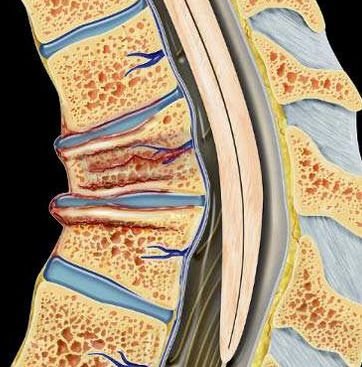Teardrop fractures
Teardrop fractures
A teardrop fracture is one of the most severe and unstable cervical spine injuries, named for the characteristic shape of the fractured bone fragment that resembles a teardrop. This fracture occurs when a fragment breaks off from the anteroinferior (front-bottom) corner of a cervical vertebral body, often after high-impact trauma. In Bangladesh, teardrop fractures are seen increasingly in emergency settings due to motorbike accidents, diving injuries, falls from height, and industrial trauma. The injury is often associated with spinal cord damage, neurological deficits, or complete paralysis, requiring urgent neurosurgical attention. Types of Teardrop Fractures Flexion Teardrop Fracture (Most Dangerous) Usually involves C5-C7 vertebrae Caused by hyperflexion (forward bending) with axial loading Often leads to anterior spinal cord syndrome or quadriplegia Extension Teardrop Fracture Typically occurs at C2 level Caused by hyperextension injuries (e.g., falls, rear-end collisions) Usually less severe but may lead to instability if untreated Rising Incidence in Bangladesh Due to dense urban traffic, lack of helmet use, and high fall rates in rural settings, teardrop fractures are frequently underdiagnosed or treated late. Many hospitals in Bangladesh still lack CT or MRI capability, and spine trauma is often mismanaged, leading to permanent disability or death. Dr. Md. Nafaur Rahman, with his advanced training in cervical spine trauma, plays a key role in early identification and surgical intervention, significantly improving patient outcomes. Common Causes in Bangladesh High-speed road traffic collisions (motorbikes, buses, rickshaws) Falls from unprotected rooftops, coconut trees, or staircases Diving into shallow ponds or rivers (common in rural Bangladesh) Crush injuries in construction or factories Head-on collisions in sports or physical assault In children: playground accidents, falls from beds, or non-accidental trauma Symptoms of Teardrop Fracture Sudden, intense neck pain after trauma Loss of motor strength in arms and legs (paralysis or weakness) Loss of sensation, tingling, or numbness Difficulty breathing in severe cases Spinal shock or flaccid paralysis In children: excessive crying, refusal to move neck or limbs, lethargy Diagnostic Approach At National Institute of Neurosciences & Hospital (NINS) and Bangladesh Paediatric Neurocare Centre, Dr. Nafaur Rahman uses a comprehensive diagnostic protocol: X-ray of Cervical Spine (AP and Lateral) – Initial screen CT Scan of Cervical Spine with 3D reconstruction – Gold standard for fracture identification MRI Cervical Spine – Detects spinal cord injury, ligament rupture, and edema Neurological Grading (ASIA score) – Assesses severity of spinal cord damage In many district hospitals, such imaging is unavailable, making referral to a spine specialist essential. Why Teardrop Fractures are Life-Threatening Often involve multiple spinal columns Frequently lead to spinal cord compression High risk of tetraplegia (quadriplegia) Delay in management can result in irreversible damage This is a surgical emergency — especially in flexion-type teardrop fractures. Management of Teardrop Fractures ✅ Non-Surgical Management (Selective Cases Only) Extension-type fractures without instability Managed with rigid cervical collar or halo vest immobilization Close radiological monitoring required Follow-up with physiotherapy ✅ Surgical Management (Gold Standard for Most Cases) Indications: Flexion-type fracture Ligamentous injury or spinal instability Spinal cord compression Neurological deficit Surgical Techniques Used by Dr. Nafaur Rahman: Anterior Cervical Discectomy and Fusion (ACDF) Corpectomy with cage/plate reconstruction Posterior cervical fusion (in unstable fractures or failed anterior fixation) 360° approach (anterior + posterior fusion) in highly unstable injuries Intraoperative neuromonitoring to protect spinal cord He employs minimally invasive techniques where feasible to reduce recovery time and complication risks. Postoperative Care & Recovery ICU monitoring in spinal cord injury cases Rigid cervical brace support for 8–12 weeks Rehabilitation including physical therapy and occupational therapy Regular follow-up imaging to ensure spinal fusion In case of cord injury: long-term neuro-rehabilitation Pediatric Considerations Children’s cervical spines are more flexible and susceptible to unique injury patterns. Pediatric teardrop fractures require growth-preserving surgical strategies, which Dr. Nafaur Rahman specializes in, minimizing long-term deformities or spinal instability. Prognosis Early surgery = improved outcomes Delayed treatment = high risk of permanent disability Extension fractures have a better prognosis than flexion fractures Multidisciplinary care (neurosurgery, ICU, physiotherapy) is key Why Choose Dr. Md. Nafaur Rahman? ✅ One of Bangladesh’s most experienced spinal neurosurgeons ✅ Expert in pediatric and adult cervical spine trauma ✅ Performs advanced spine instrumentation and fusion surgeries ✅ Practices at NINS and Bangladesh Paediatric Neurocare Centre ✅ High success rate with complex cervical fractures ✅ Dedicated to providing affordable world-class care in Bangladesh Contact for Urgent Consultation or Surgery 📌 Dr. Md. Nafaur Rahman Assistant Professor, Department of Pediatric Neurosurgery, National Institute of Neurosciences & Hospital (NINS) Chief Consultant, Bangladesh Paediatric Neurocare Centre 📞 For Serial/Appointment: 📱 +8801912988182 | +8801607033535 🌐 Visit: www.neurosurgeonnafaur.com










